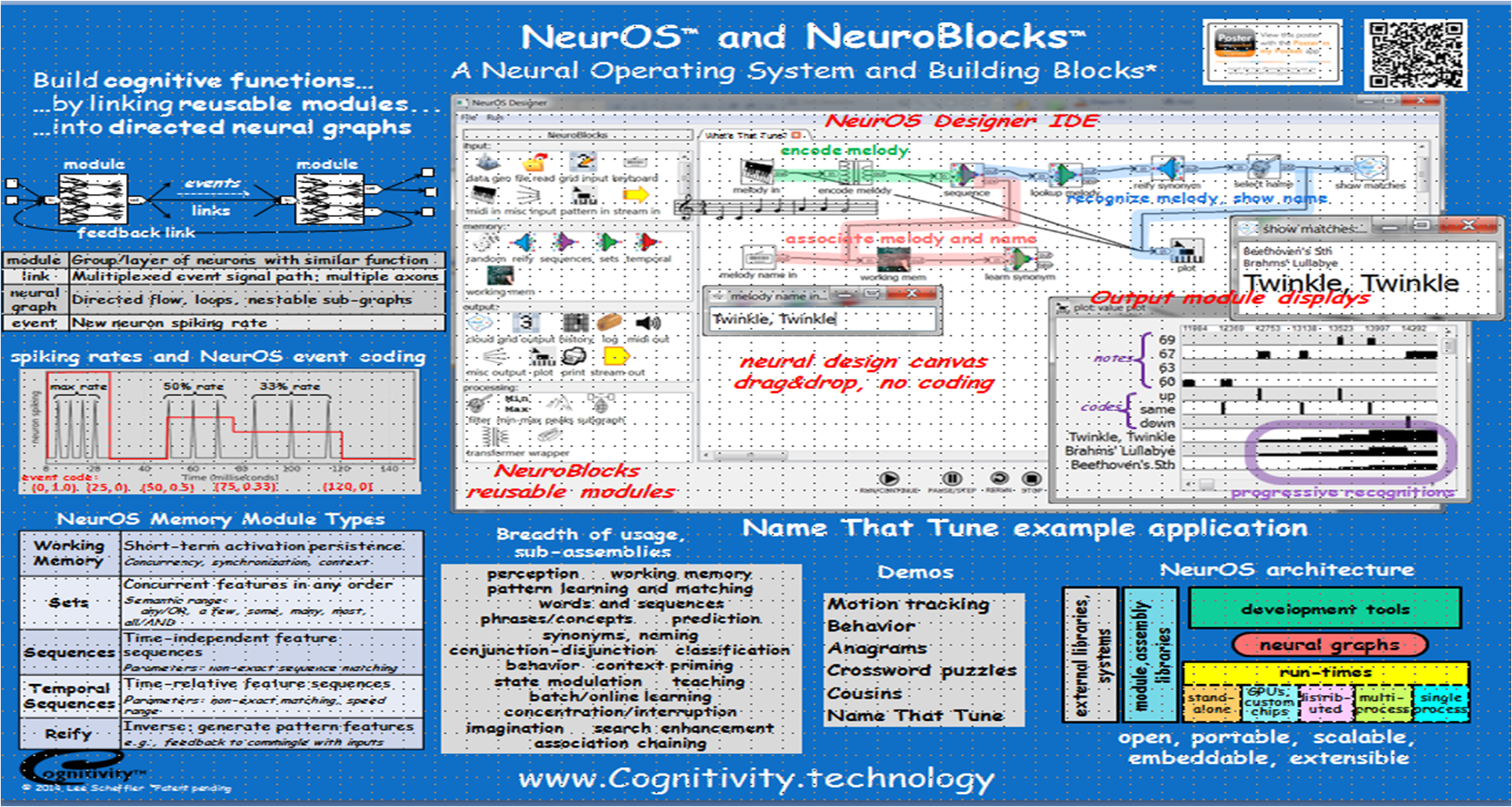NeurOS is a neural operating system and visual neural/cognitive programming language. It supports a neural computing paradigm, a non-von Neumann, non-procedural, parallel data flow style of computation similar to the way biological brains operate. Signals flow in parallel through a neural graph of reusable NeuroBlock modules managing groups of neural functional elements. This models the ebb and flow and recombinatoric concurrent computation processing style of biological brains. Memory is distributed among modules and learning can be continuous.
NeurOS is specifically architected for:
- Rapid, iterative, visual development, with graphical and hierarchical composition
- Sharing and reuse of developed components, assemblies, applications and learned long-term memories
- Easy customization
- Easy integration/extension with external technologies
- Easy embedding in external systems
- Application portability and performance scalability to a wide range of platforms, including embedded systems, uni- and multi-processors, distributed and heterogeneous systems, and custom hardware, without application redesign
A technical paper introducing NeurOS and NeuroBlocks was presented at the 2014 Biologically Inspired Cognitive Architectures (BICA) Conference and published in BICA Journal.
A second technical paper discussing building heterarchies of pattern recognizers for explicit exemplars through more general prototype/categories was presented at the 2016 Biologically Inspired Cognitive Architectures (BICA) Conference and published in Procedia Computer Science 2016 vol 88
| BICA conference presentation video | BICA conference poster | Technology descriptions |
|
(Click lower-right symbol to view full-screen) |
 |
The demonstration videos show a variety of usage patterns and prototype applications built with NeurOS.
A NeurOS development kit is expected to be available in the near future.
Join the NeurOS interest community to be notified when the NeurOS technical paper, the development kit and additional demonstrations and prototypes become available, and to track advances in the technology.